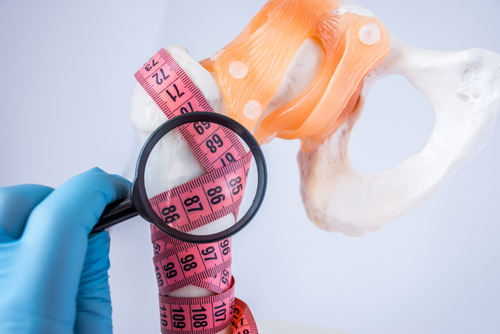Enzyme Replacement Therapy and Bisphosphonates Can Limit Gaucher Bone Loss, Study Shows
Written by |

Enzyme replacement therapy, either alone or combined with a bone loss prevention treatment, helps patients with Gaucher disease type 3 avoid bone thinning, a long-term study shows.
The treatment was effective in both adults and children. It was the first study to show that bone loss prevention treatments known as bisphosphonates can be safe for children, researchers said.
They presented their findings at the 14th WORLDSymposium 2018 in San Diego in February. The title of the poster session was “Osteopenia in Egyptian Gaucher disease type 3 patients: An 11 year prospective study.”
An accumulation of lipid-laden cells in the bone marrow of Gaucher patients leads to a number of bone complications. These include fractures that damage blood vessels, bone pain, deformities, and osteopenia, or bone thinning.
Gaucher patients are usually treated with an enzyme replacement therapy that restores the glucocerebrosidase enzyme’s function.
Magy Adbelwahad of Egypt’s Cairo University Pediatric Hospital and Paige Kaplan of the University of Pennsylvania’s Perelman School of Medicine wondered if a combination of enzyme replacement therapy and bisphosphonate therapy could prevent bone thinning in Gaucher patients.
The study included 45 people with Gaucher disease type 3. Eight were adults, 18 children, and 19 adolescents.
Participants were followed for up to 11 years. The bone mineral density of their lumbar spine was initially assessed at five years, followed by subsequent evaluations according to patients’ disease status.
Patients received enzyme replacement therapy for three to 19 years, with most starting during infancy. Thirty-nine patients received 60 IU per kg every two weeks (Group 1). Six received 20-30 IU per kg every two weeks for two years, followed by 60 IU per kg every two weeks from there on (Group 2).
If a patient continued to have severe osteopenia after two years, doctors added bisphosphonates to their care. This was also true for patients with fractures, severe bone pain, or interruption of blood supply to the bone.
Common bone alterations and related symptoms were short stature, abnormal spine curvature, moderate to severe bone pain, fractures, bone tissue damage, and chest malformation.
In Group 1, enzyme replacement therapy improved osteopenia in 35.6% of patients and left it unchanged in 4.4%. But 31.1% developed worse symptoms. This showed that the therapy “can ameliorate osteopenia in many GD3 [Gaucher disease type 3] patients,” the researchers wrote.
Among the 10 patients who received enzyme replacement therapy plus bisphosphonates, symptoms of Gaucher disease were reversed and bone mineral density was increased.
Importantly, the team showed for the first time that bisphosphonates can be used in children with bone loss that fails to respond to enzyme replacement therapy. The approach seems to “protect against further fractures,” the researchers wrote.



